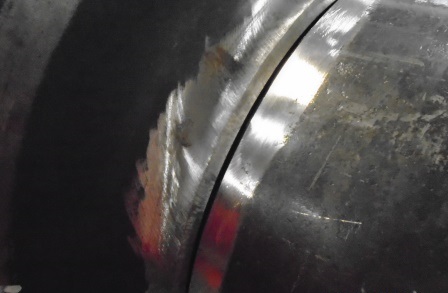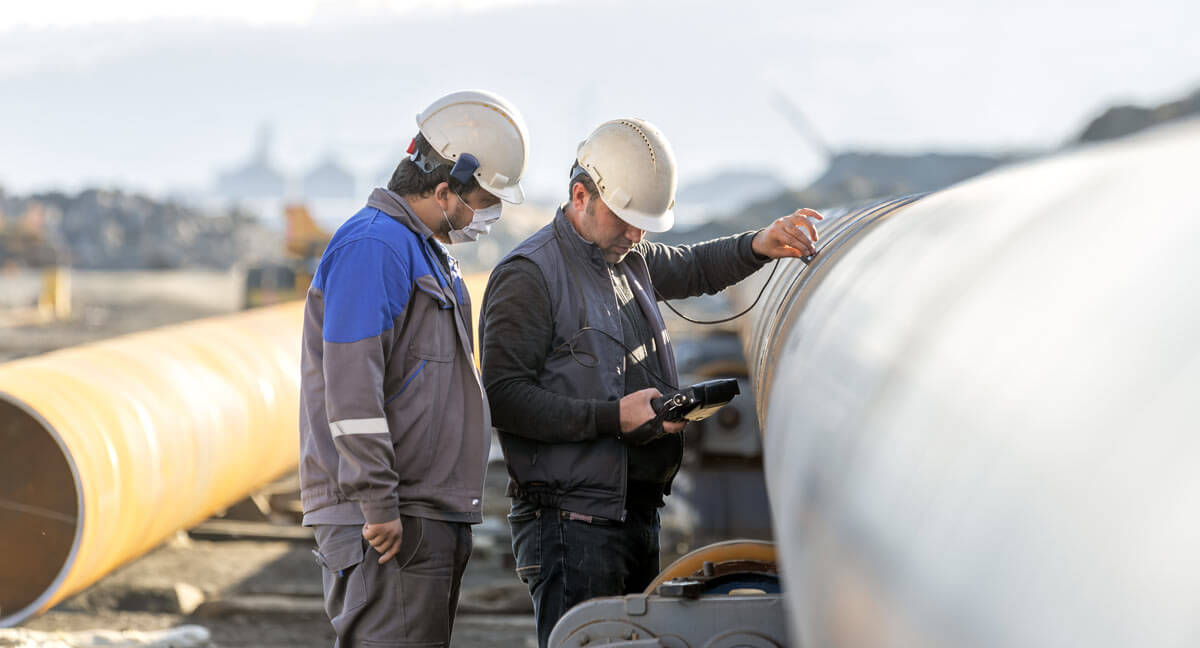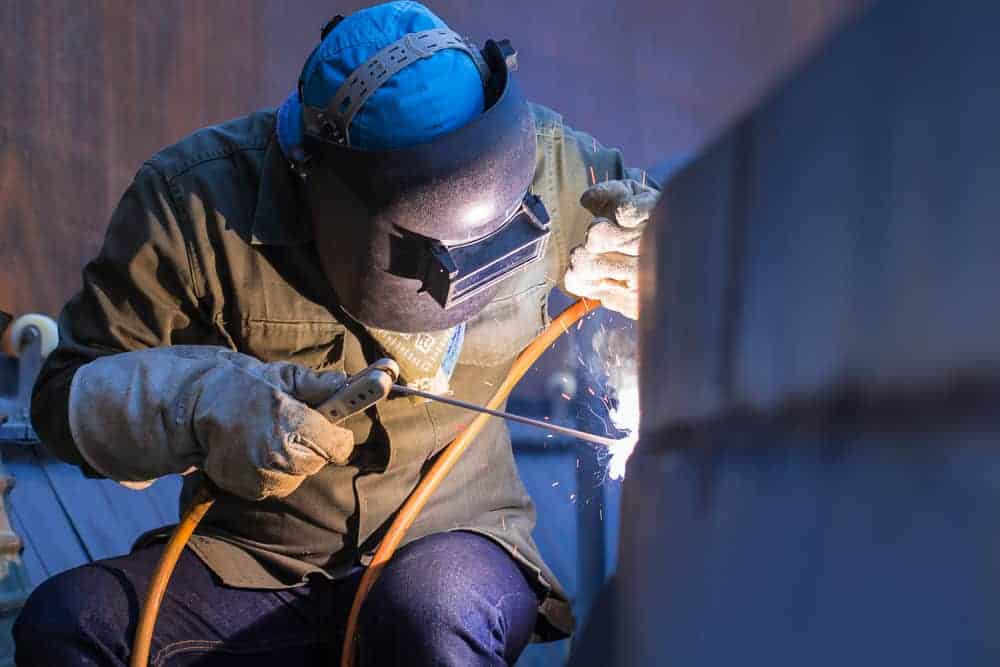How Welding Inspection Adds To Durability and Integrity in Fabrication Jobs
Welding examination serves as a fundamental component in making sure the durability and integrity of fabrication projects. By systematically identifying potential flaws throughout various phases of manufacturing, welding examinations not just protect against costly failings but likewise promote a society of high quality assurance within the group.

Importance of Welding Inspection
Making certain high quality through welding inspection is a critical part of any type of construction job. It works as a secure to verify that welding procedures meet recognized standards and requirements, thus enhancing the general integrity of the structure or component being made. Welding evaluation is not just a step-by-step action; it is an essential technique that helps recognize potential issues early, ensuring that they are addressed prior to they intensify right into significant troubles.
The relevance of welding evaluation can be underscored by its duty in keeping security and longevity. Bonded joints are frequently subjected to extreme conditions, and any issues can compromise the efficiency and longevity of the end product. By carrying out extensive inspection protocols, companies can ensure compliance with sector laws, therefore reducing risks connected with structural failings.
Furthermore, effective welding evaluation fosters self-confidence among stakeholders, including clients and regulatory bodies, that the task satisfies the finest criteria. This not just enhances the credibility of the fabricator however likewise contributes to long-term price financial savings by preventing rework and prospective responsibilities. Ultimately, welding evaluation is essential to the success and reliability of fabrication projects, strengthening the value of quality control in design techniques.

Usual Welding Defects
Welding flaws can significantly weaken the architectural integrity of produced parts, making their recognition and correction crucial. Usual welding defects can be generally classified right into 3 kinds: geometric, metallurgical, and service-related.
Geometric defects include issues such as undercutting, where the base steel is worn down beside the weld, and excessive convexity, which can result in stress focus points. These issues can endanger the strength and durability of the weld joint.
Metallurgical flaws arise from improper welding treatments or products, bring about problems such as porosity, where gas pockets develop within the weld, and lack of combination, which occurs when the weld metal falls short to bond correctly with the base metal. These problems can substantially deteriorate the weld's effectiveness.
Service-related issues might not end up being noticeable until after the component is in use. Examples include splitting due to thermal anxiety or exhaustion, which can lead to catastrophic failings otherwise attended to.
Recognizing these common defects encourages makers to carry out reliable assessment strategies that improve the reliability and long life of their jobs, ultimately guaranteeing safety and security and efficiency requirements are met.
Examination Techniques and Techniques
A thorough strategy to examination strategies and methods is necessary for determining and reducing welding defects in construction projects. Various approaches are used to guarantee the integrity of welds, consisting of visual evaluation, ultrasonic testing (UT), radiographic testing (RT), magnetic fragment screening (MT), and dye penetrant testing (PT) Each strategy has its toughness and details applications.

Magnetic fragment testing is helpful for discovering surface area and near-surface problems in ferromagnetic products. By using an electromagnetic field and utilizing ferrous fragments, inspectors can recognize suspensions successfully. Color penetrant screening highlights surface-breaking issues via the application of a dye that leaks into splits, making them visible under ultraviolet light.
Using a combination of these approaches guarantees a strenuous analysis, improving the reliability of bonded frameworks.

Impact on Project Long Life
Efficient inspection practices substantially affect the durability of fabrication projects. By recognizing prospective defects and incongruities in welding procedures, examinations ensure that frameworks are constructed to endure functional stress and anxieties gradually. When welds are thoroughly analyzed, the possibility of undetected issues, which could lead to structural failings, is minimized.
Normal examinations help with adherence to industry requirements and regulations, which are essential for guaranteeing the durability of welded joints. Such conformity not only boosts the integrity of the task yet also guarantees stakeholders pertaining to the top quality of the job. Timely detection of problems permits for restorative actions to be taken early, preventing expensive repairs or complete overhauls down the line. Welding Inspection Milwaukee.
In addition, effective assessment methods cultivate a culture of quality control within manufacture teams. over at this website They are more most likely to adhere to ideal practices and preserve high standards throughout the production process when employees are conscious that their job will be rigorously reviewed. Inevitably, this commitment to quality not only expands the life expectancy of the job but additionally minimizes maintenance expenses, thereby boosting the total financial practicality of construction endeavors.
Enhancing Integrity in Fabrication
Reliability in fabrication is original site considerably boosted with rigorous assessment procedures that deal with prospective weaknesses in welding techniques. Efficient welding evaluation not only recognizes issues early however additionally provides critical feedback to welders, ensuring adherence to developed requirements and specs. By utilizing non-destructive testing methods, such as ultrasonic or radiographic examinations, makers can determine the stability of welds without compromising the material.
Additionally, regular assessments promote a society of high quality and responsibility amongst fabrication teams. When welders recognize that their work is subject to strict examinations, they are extra most likely to abide by best methods and techniques. This positive technique lessens the danger of costly failures during the operational phase of a task.
In addition, complete documentation of assessment results creates a valuable repository of information that can be utilized for future jobs. Fads in issues can be assessed to enhance welding methods and training programs (Welding Inspection Milwaukee). Eventually, improving integrity in construction with detailed examination processes not just boosts the life-span of the produced parts but likewise strengthens stakeholder self-confidence in the task's overall quality and resilience. Purchasing robust welding assessment practices is important for achieving lasting dependability in any construction venture.
Verdict
In recap, welding examination offers as a vital component in making certain the longevity and integrity of fabrication tasks. Eventually, efficient welding inspection practices reinforce stakeholder self-confidence and substantially add to the economic viability of manufacture endeavors.
Welding assessment offers as a foundational component in ensuring the longevity and integrity of construction projects.Making certain top quality with welding examination is a vital part of site any manufacture job. Inevitably, welding assessment is integral to the success and reliability of fabrication tasks, enhancing the value of high quality guarantee in engineering practices.
A detailed strategy to assessment methods and methods is necessary for determining and minimizing welding problems in manufacture jobs.In summary, welding inspection serves as a crucial element in ensuring the durability and integrity of manufacture projects.